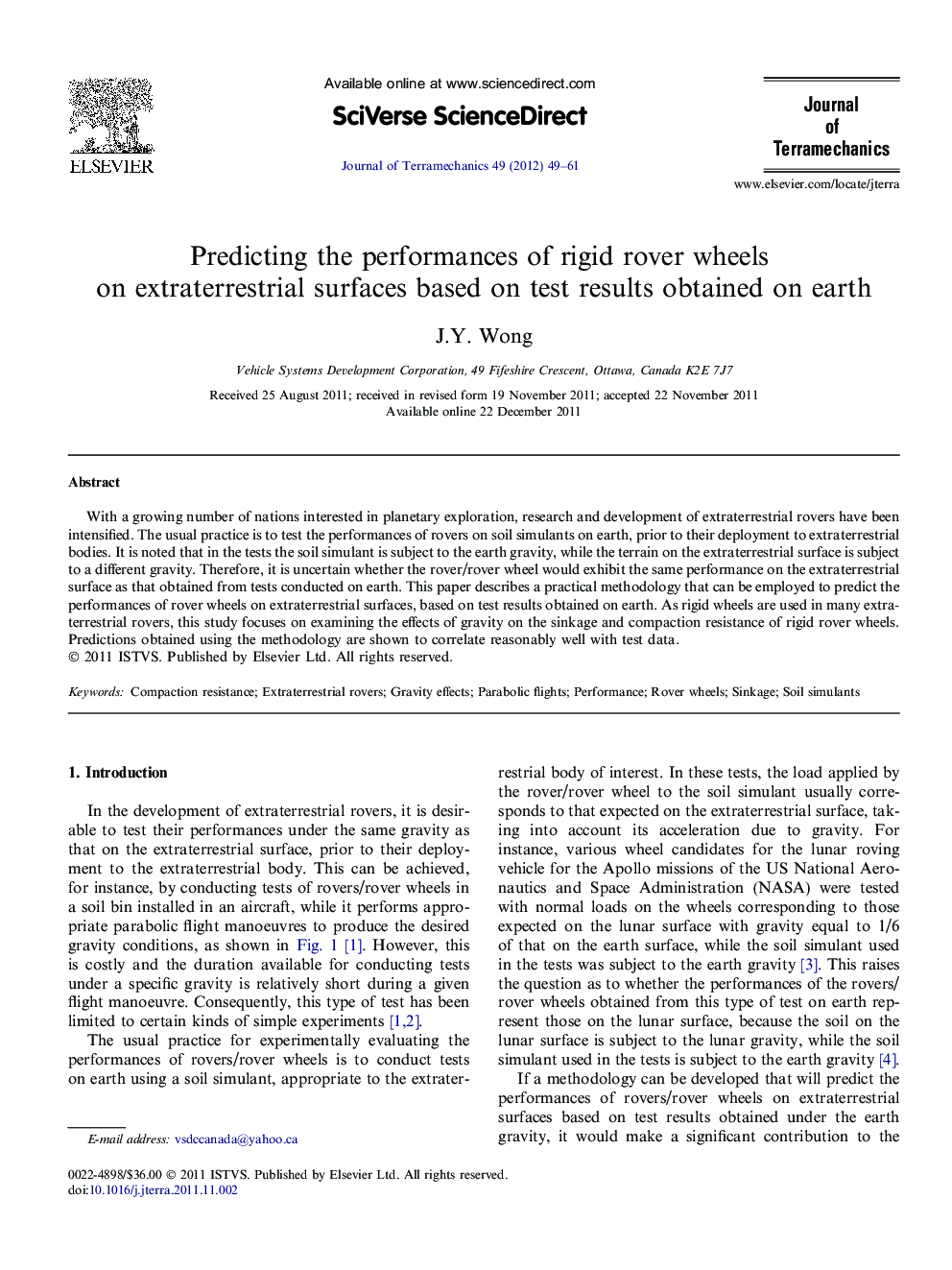| Article ID | Journal | Published Year | Pages | File Type |
|---|---|---|---|---|
| 799385 | Journal of Terramechanics | 2012 | 13 Pages |
With a growing number of nations interested in planetary exploration, research and development of extraterrestrial rovers have been intensified. The usual practice is to test the performances of rovers on soil simulants on earth, prior to their deployment to extraterrestrial bodies. It is noted that in the tests the soil simulant is subject to the earth gravity, while the terrain on the extraterrestrial surface is subject to a different gravity. Therefore, it is uncertain whether the rover/rover wheel would exhibit the same performance on the extraterrestrial surface as that obtained from tests conducted on earth. This paper describes a practical methodology that can be employed to predict the performances of rover wheels on extraterrestrial surfaces, based on test results obtained on earth. As rigid wheels are used in many extraterrestrial rovers, this study focuses on examining the effects of gravity on the sinkage and compaction resistance of rigid rover wheels. Predictions obtained using the methodology are shown to correlate reasonably well with test data.
► Methods developed for predicting rover wheel performance on planets based on test results obtained on earth. ► Predictions by the methods developed correlate reasonably well with test data. ► Methods developed have potential as engineering tools for practical applications.
